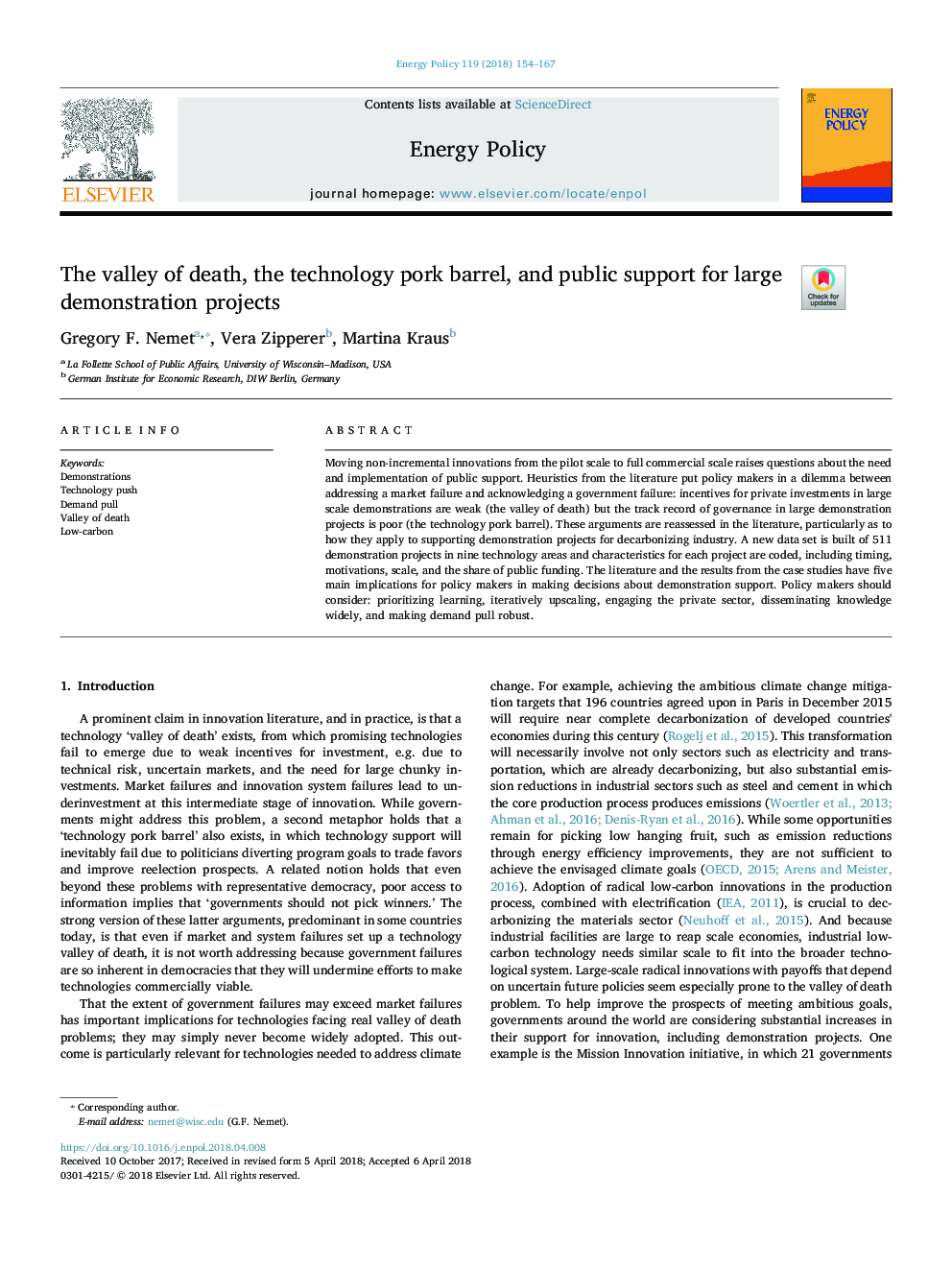| Article ID | Journal | Published Year | Pages | File Type |
|---|---|---|---|---|
| 7397158 | Energy Policy | 2018 | 14 Pages |
Abstract
Moving non-incremental innovations from the pilot scale to full commercial scale raises questions about the need and implementation of public support. Heuristics from the literature put policy makers in a dilemma between addressing a market failure and acknowledging a government failure: incentives for private investments in large scale demonstrations are weak (the valley of death) but the track record of governance in large demonstration projects is poor (the technology pork barrel). These arguments are reassessed in the literature, particularly as to how they apply to supporting demonstration projects for decarbonizing industry. A new data set is built of 511 demonstration projects in nine technology areas and characteristics for each project are coded, including timing, motivations, scale, and the share of public funding. The literature and the results from the case studies have five main implications for policy makers in making decisions about demonstration support. Policy makers should consider: prioritizing learning, iteratively upscaling, engaging the private sector, disseminating knowledge widely, and making demand pull robust.
Related Topics
Physical Sciences and Engineering
Energy
Energy Engineering and Power Technology
Authors
Gregory F. Nemet, Vera Zipperer, Martina Kraus,
